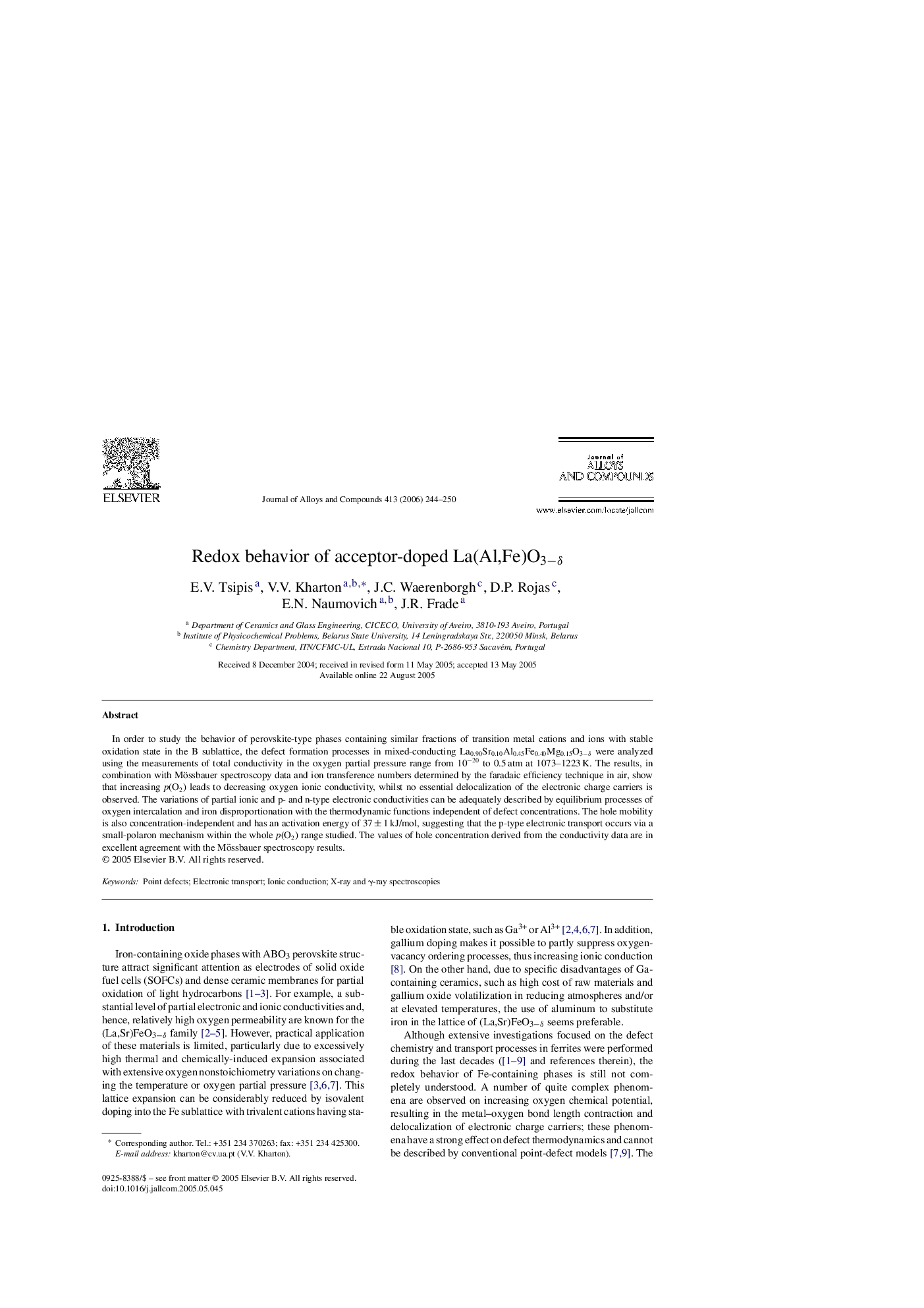| Article ID | Journal | Published Year | Pages | File Type |
|---|---|---|---|---|
| 1627958 | Journal of Alloys and Compounds | 2006 | 7 Pages |
Abstract
In order to study the behavior of perovskite-type phases containing similar fractions of transition metal cations and ions with stable oxidation state in the B sublattice, the defect formation processes in mixed-conducting La0.90Sr0.10Al0.45Fe0.40Mg0.15O3âδ were analyzed using the measurements of total conductivity in the oxygen partial pressure range from 10â20 to 0.5 atm at 1073-1223 K. The results, in combination with Mössbauer spectroscopy data and ion transference numbers determined by the faradaic efficiency technique in air, show that increasing p(O2) leads to decreasing oxygen ionic conductivity, whilst no essential delocalization of the electronic charge carriers is observed. The variations of partial ionic and p- and n-type electronic conductivities can be adequately described by equilibrium processes of oxygen intercalation and iron disproportionation with the thermodynamic functions independent of defect concentrations. The hole mobility is also concentration-independent and has an activation energy of 37 ± 1 kJ/mol, suggesting that the p-type electronic transport occurs via a small-polaron mechanism within the whole p(O2) range studied. The values of hole concentration derived from the conductivity data are in excellent agreement with the Mössbauer spectroscopy results.
Related Topics
Physical Sciences and Engineering
Materials Science
Metals and Alloys
Authors
E.V. Tsipis, V.V. Kharton, J.C. Waerenborgh, D.P. Rojas, E.N. Naumovich, J.R. Frade,
